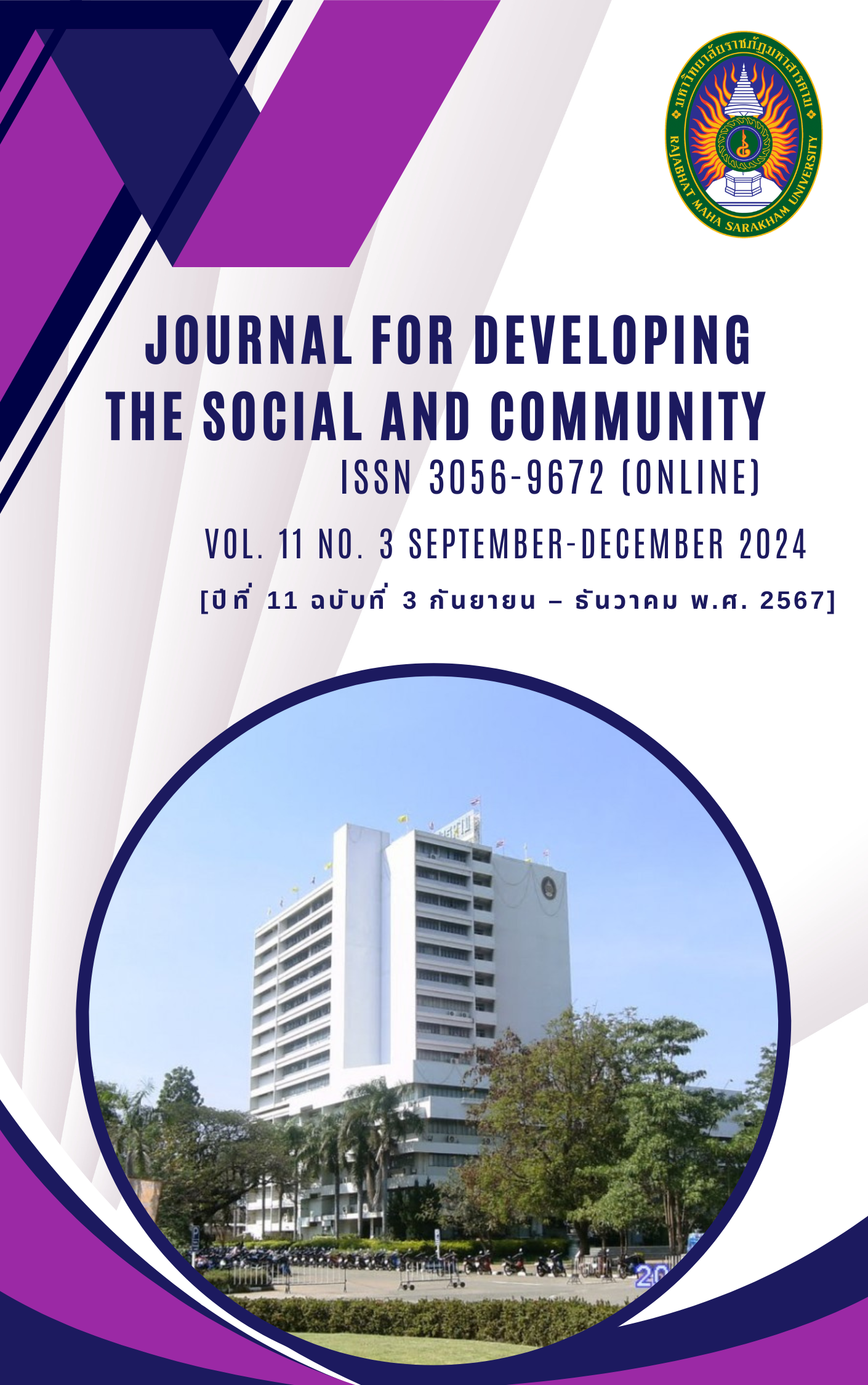A Study on the Desirable Characters of Students Attending Rajabhat MahaSarakham University Demonstration School
Keywords:
Desirable characteristics, Learning stage, Student's genderAbstract
The purpose of this research was (1) to study the desirable characteristics of secondary school students at the Demonstration School of Mahasarakham Rajabhat University, and (2) to compare the desirable characteristics of students at the Demonstration School of Mahasarakham Rajabhat University based on gender and grade level, specifically comparing lower secondary and upper secondary students. The sample group consisted of 131 students from grades 1 to 6 in the first semester of the 2024 academic year, selected through stratified random sampling The research instrument was a questionnaire designed to measure the desirable characteristics of students in 8 areas, using a 4-point Likert scale with 36 items. The item-objective congruence (IOC) index ranged from 0.60 to 1.00, the discrimination power ranged from 0.20 to 0.71, and the overall reliability of the instrument was 0.90. The data were analyzed using mean, standard deviation, and independent t-test statistics.
The findings were as follows (1) The overall desirable characteristics of the students were rated at an excellent level ( = 2.54, S.D. = 0.42). When examined by area, the highest-rated characteristic was Area 5: Living sustainably ( = 2.62, S.D. = 0.50), followed by Area 3: Discipline ( = 2.60, S.D. = 0.59). The lowest-rated characteristic was Area 7: Love for Thai culture ( = 2.38, S.D. = 0.59) (2) The comparison of overall desirable characteristics between male and female students revealed a statistically significant difference at the 0.05 level, with female students showing higher desirable characteristics than male students. Additionally, the comparison between lower secondary and upper secondary students showed a statistically significant difference at the 0.05 level, with upper secondary students exhibiting higher desirable characteristics than lower secondary students
References
Chatiyanon, B. (2018). "A Study of the Desirable Characteristics of Students at the Demonstration School of Silpakorn University." Veridian E-Journal. Silpakorn University. Thai Edition in the field of Humanities. Social Sciences, and Arts,11(3), 2284-2299.
Kaemmani, T. (2017). 14 Teaching Methods for Professional Teachers (13thed). Bangkok: Chulalongkorn University Press.
Nao Saeng, T. (2018). Desirable characteristics of Grade 9 students at Suankularb Wittayalai Chonburi School under the Secondary Education Service Area Office 18. (Master’s Thesis). Burapha University. Faculty of Education, Educational Administration Program.
Office of Academic and Educational Standards. Office of Basic Education Commission. Ministry of Education. (2010). Guidelines for developing measurement and evaluation of desired characteristics according to the National Curriculum for Basic Education B.E. 2551. Bangkok: Office of Academic and Educational Standards.
Office of the National Education Commission. (2002). National Education Act B.E. 2542 and Amendments (No. 2) B.E. 2545. Bangkok: Office of the National Education Commission.
Worakawin, K. (2017). The Roles and Responsibilities of Youth Towards Society and the Nation with a Focus on Public Mind. In Textbook for the Basic Social Studies. Religion.and Culture Curriculum According to the National Core Curriculum for Basic Education B.E. 2551 (Revised Edition B.E. 2560). Grade 1 of Lower Secondary School. Bangkok: Panya Wichakan Publishing Co. Ltd.
Downloads
Published
How to Cite
Issue
Section
License
Copyright (c) 2024 Journal for Developing the Social and Community

This work is licensed under a Creative Commons Attribution-NonCommercial-NoDerivatives 4.0 International License.
Articles that are published are copyrighted by the authors of the articles







